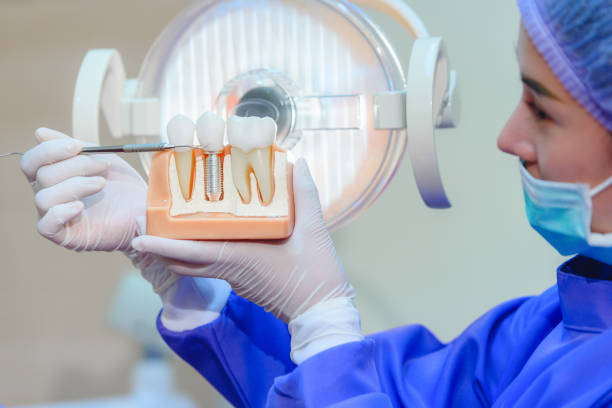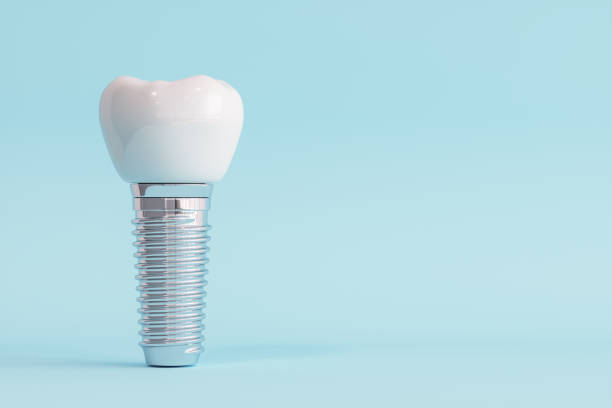By Dr. Miguel A. Estrella, DDS – TruSmile Dental Implant Center
Not all dental implants are created equal. With advancements in implant dentistry, patients now have several options to choose from—each designed to fit unique oral health needs, jawbone structure, and lifestyle goals.
At TruSmile Dental Implant Center, we believe that education leads to better outcomes. In this article, I’ll walk you through the main types of dental implants and help you understand how we determine the best solution for each patient.
The Main Types of Dental Implants
1. Endosteal Implants (Most Common)
These implants are surgically placed into the jawbone and typically shaped like screws or cylinders. Once the implant fuses with the bone, a crown or bridge is placed on top.
✅ Ideal for: Patients with sufficient healthy jawbone
✅ Success rate: Over 95% in long-term studies [1]
2. Subperiosteal Implants
These rest on top of the jawbone but under the gum. They’re used when a patient lacks sufficient bone height and may not be a candidate for bone grafting.
✅ Ideal for: Patients with shallow jawbones or who can’t undergo extensive surgery
✅ Less commonly used today due to modern bone grafting options [2]
3. Zygomatic Implants
These are anchored into the cheekbone (zygoma) instead of the jaw and are reserved for patients with severe bone loss in the upper jaw.
✅ Ideal for: Complex cases or those requiring full upper jaw reconstruction
✅ Requires specialized expertise and imaging [3]
Implant-Supported Options Based on Tooth Loss
✅ Single Tooth Implant
Used when one tooth is missing. A single titanium post is topped with a custom crown.
✅ Implant-Supported Bridge
Ideal for replacing several missing teeth in a row. Two or more implants support a bridge of prosthetic teeth.
✅ All-on-4® or All-on-6®
A full arch of teeth is supported by four to six strategically placed implants.
According to research in the Journal of Oral Implantology, full-arch solutions like All-on-4 offer high stability and patient satisfaction, especially when immediate loading is used [4].
Factors We Consider When Recommending an Implant Type
At TruSmile, we evaluate several factors before making a recommendation:
- Bone quality and quantity (using 3D CBCT scans)
- Overall health and history of conditions like diabetes or osteoporosis
- Budget and insurance coverage
- Lifestyle factors like smoking or grinding teeth
- Aesthetic goals
We also take your personal preferences and comfort level into account, offering sedation options and minimally invasive placement whenever possible.
Why Material Matters: Titanium vs. Zirconia
Most implants are made of medical-grade titanium, which is highly biocompatible and proven to integrate with bone. However, zirconia implants—a metal-free alternative—are available for patients with sensitivities or preferences for holistic materials.
Clinical trials show comparable success rates between zirconia and titanium implants, though titanium remains the most researched and widely used option [5].
Making the Right Decision
Choosing the right implant isn’t something you have to do alone. During your consultation, we’ll guide you through each option using digital scans, visual models, and honest recommendations tailored to your needs.
At TruSmile, our goal is to restore your smile with confidence—both in appearance and function.
Final Thoughts
Dental implants are an investment in your health, confidence, and quality of life. Understanding your options empowers you to make informed decisions. Whether you’re missing a single tooth or an entire arch, there’s an implant solution for you—and we’re here to help you find it.
References:
- Buser, D., et al. (2012). 10-year survival and success rates of 511 titanium implants. Clinical Oral Implants Research, 23(1), 8–16.
- Hwang, D., Wang, H. L. (2006). Medical contraindications to implant therapy: Part I: Absolute contraindications. Implant Dentistry, 15(4), 353–360.
- Chrcanovic, B. R., et al. (2014). Survival and complications of zygomatic implants: A systematic review. International Journal of Oral & Maxillofacial Surgery, 43(6), 753–761.
- Malo, P., et al. (2011). All-on-4 immediate-function concept for completely edentulous maxillae: A clinical report on the medium (3 years) and long-term (5 years) outcomes. Journal of Oral Implantology, 37(3), 251–261.
- Osman, R. B., et al. (2015). Titanium vs. zirconia implants: A systematic review. European Journal of Oral Implantology, 8(2), 161–172.



